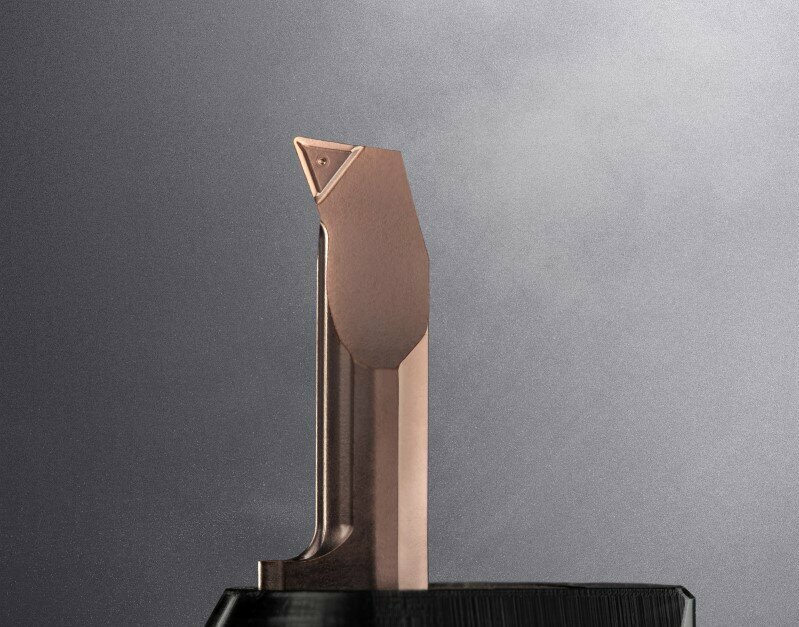工具技术的象征
"保罗·霍恩在仔细检查Supermini的第一个原型时心想:'这将彻底改变镗削。' Supermini系统于1989年推出,至今仍是Paul Horn GmbH最成功的产品之一。在过去的35年中,这种工具系统经历了许多发展阶段,并解决了全球各种加工应用的挑战。霍恩现在以Supermini 105型号的烧结切屑断裂几何形状,再次展示了Supermini历史上的又一个里程碑。'通过辛勤工作,我们成功地经济地解决了在加工小孔直径时产生的长切屑问题,'总经理马库斯·霍恩表示。
镗削、轮廓车削、内槽、螺纹加工、倒角、面车削、钻孔和槽铣:Supermini工具系统可用于多种加工操作。固体硬质合金刀片可用于直径从0.2毫米到约10毫米的镗削。霍恩为该工具开发了泪滴形状的硬质合金坯料。这使得工具夹持器中有着大而精确的接触表面,从而增加整个系统的刚度。此外,泪滴形状可防止刀片扭转,从而导致工具中心高度保持一致精确。在长刀具悬挑的情况下,它减少了挠曲并在车削过程中减小了振动。根据应用和待加工的直径,霍恩提供三种不同尺寸(105、109和110型号)和不同坯料类型的刀片。所有型号均允许直接向切削区域进行内部冷却供给。霍恩的工具产品线包含大约2500种不同的Supermini标准变种。此外,霍恩还提供无数定制解决方案,解决用户的加工问题。
切削问题得到解决
内部加工中的最大挑战之一是长切屑的产生。根据材料不同,镗削往往会产生绕在工具周围、堵塞孔洞甚至导致工具断裂的切屑带。切屑断裂几何形状可以帮助解决这个问题。它引导并形状切屑,使其断裂。先前,通常使用特殊激光或磨削的切屑断裂几何形状。然而,这会增加刀片的成本。通过新型105 Supermini,霍恩成功地开发出了具有烧结切屑断裂几何形状的通用镗削工具。该工具由于良好的切屑控制而具有高加工可靠性。切削刃几何形状延伸到刀片的角半径处。这确保即使在小进给设置下,也能实现切屑控制。该几何形状可广泛用于不同材料组,并适用于内部、面部、复制和背部车削。
除了几何形状外,霍恩还优化了刀片的硬质合金坯料,使其具有更大的刚度和更稳定的切削边缘区域。冷却供给也进行了修订。新刀片与众多105型号刀体兼容。霍恩将标准刀片提供三种长度(15.0毫米、20.0毫米和25.0毫米)和硬质合金等级TH35和IG35。角半径为0.2毫米。该工具适用于从6毫米孔径开始使用。刀片的广泛应用范围与其成本效益相辅相成,因为新型Supermini的价格与标准无几何形状刀片相仿。新型Supermini将于2024年12月06日起现货供应。
用户可以从各种不同类型的刀体中为其应用选择合适的解决方案,包括圆柄、方柄、接口和可调节的刀体,适用于不同的机床制造商。霍恩提供四种不同的夹持刀片的解决方案:经典的球形压力螺丝、面夹紧元件和升降元件。对于空间受限的情况,霍恩还提供通过联合螺母夹持的紧凑系统。
